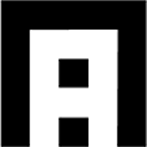Photo Exhibition
Evan Lee’s new exhibition, Closer Than They Appear, documents twenty-five photographs taken over the last seven or so years, showing the often forgotten aspects of Vancouver life. Lee kept his camera with him, photographing whatever caught his attention, whether it was a cherry blossom tree caught in the force of the wind, or a police incident on the side streets of East Hastings. Habitually recording those moments of transition between the scheduled events of our life (working, shopping, driving), Lee investigates what he calls the ‘most everyday’, a world simultaneously more remote and more real, “a process very cyclical and repetitive”.
Surveying the most public and mundane of activities, Lee’s work captures those exchanges which often unconsciously recur in our movement through city spaces. Yet a residual unease creeps upon our viewing of these ‘moments’ – an elderly gentleman breaking stone for a new construction site, a young girl sharpening her target skills. Is Lee attempting to provide a record of the discomforting activities that step outside of normative behavior, that lie unacknowledged on the periphery of economic and political centers? Concluding this would be denying the photograph’s ability to circumvent a simplistic reading, for Lee’s greatest strength lies in the photograph’s disavowal of any pedagogy.
Evan Lee was born in Vancouver in 1975, and received his MFA from UBC in 2000. He has held exhibitions at a number of Vancouver and Lower Mainland Galleries and Artist Run Centres.
Closer Than They Appear is the first series in “Locating Asiaâ€, a year-long project at Centre A which sought to investigate the multitude of constructions and limitations of an endeavor dedicated to the exhibition of ‘Contemporary Asian Art’ – particularly in the socio-economic context of Vancouver. As Lee reflects of his own identities in the process of making his art:
“The places depicted in these works represent my travels outside the studio, the place where I work in relative isolation. There is a certain degree of introversion involved in studio labour, and I think it is present in the work produced there, as in my still life pictures. In this private space, the issue of my cultural identity is never explicit since there is no one else present. That is, it is only when I ‘go outside’ that my conception of my self is transformed; I begin to deal with it relative to other people and their spaces. Perhaps the concept of alterity is predicated on relativity. I suppose that to this extent, the idea of identity and ‘the everyday’come together in these pictures.”









